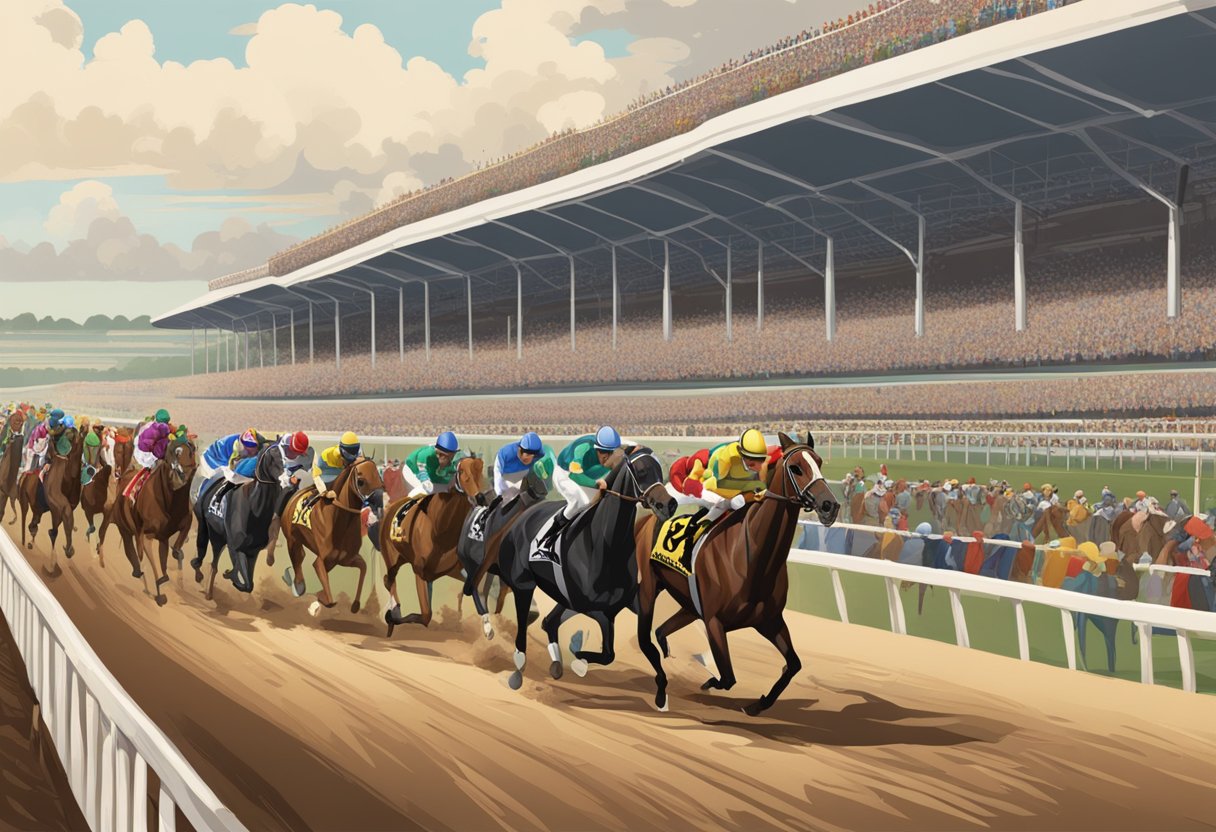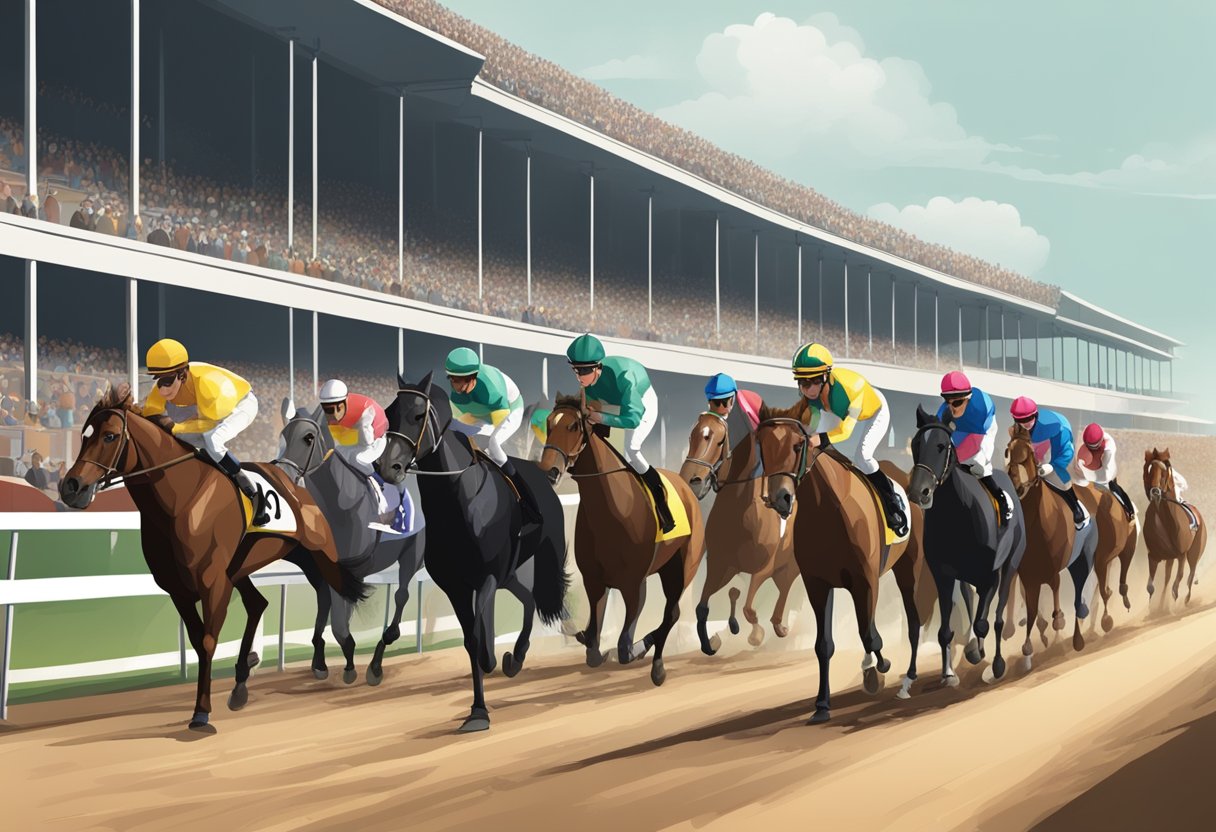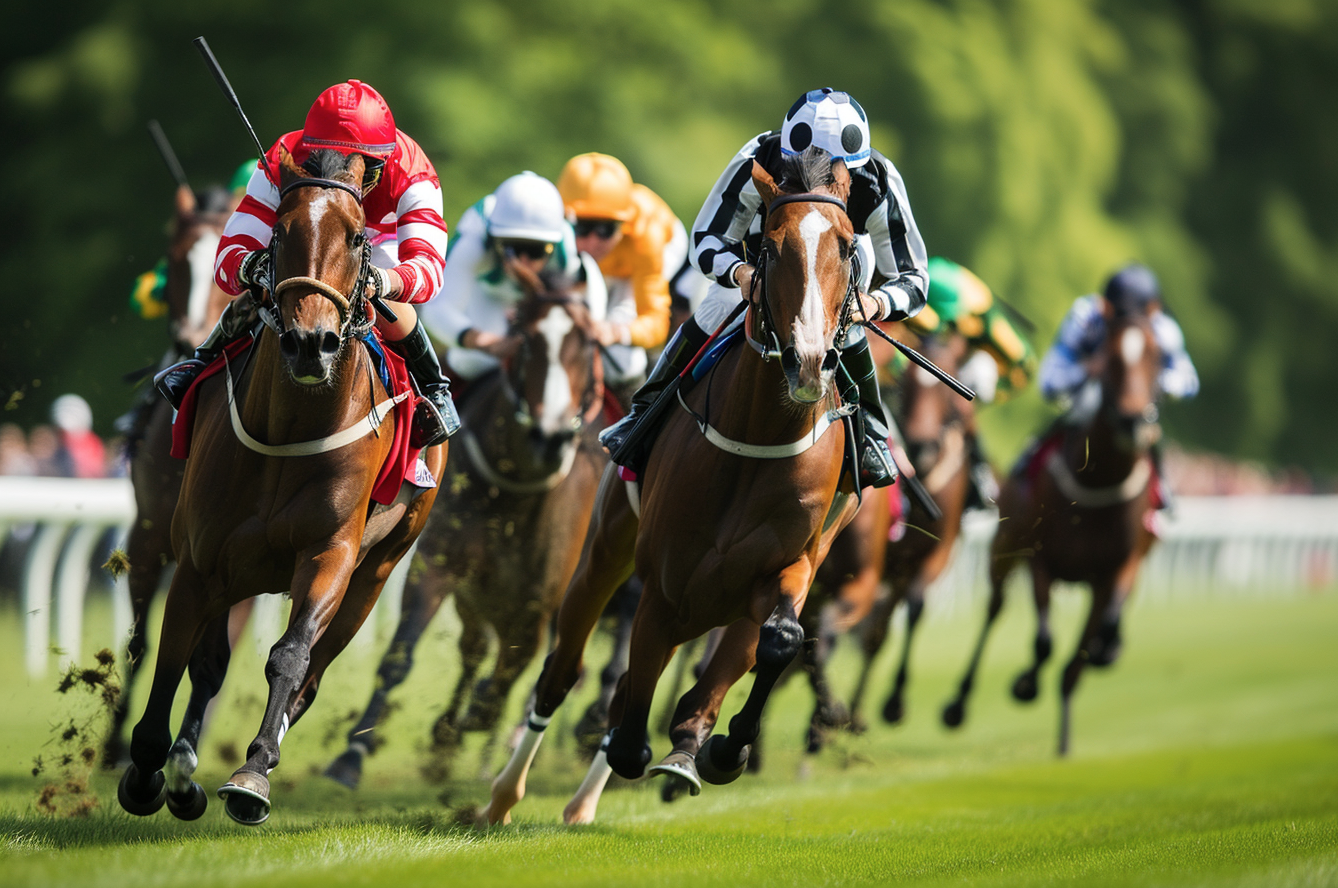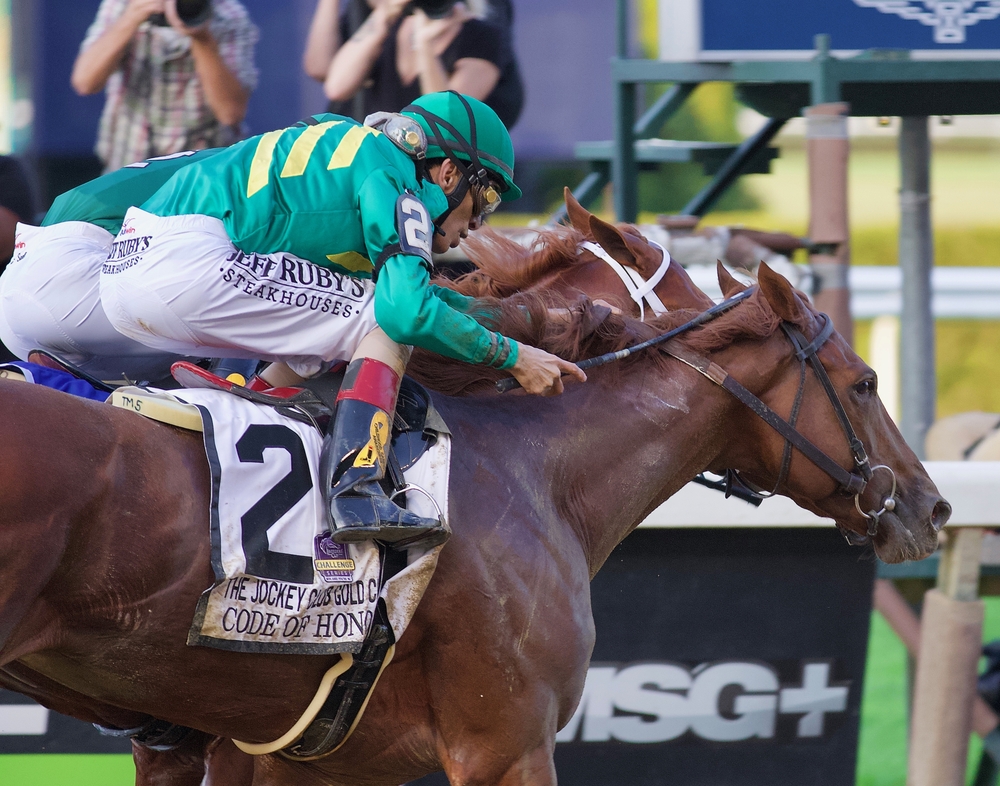In the world of horse racing, pedigree is a critical element that often determines a horse’s potential for success on the track. A horse’s pedigree is essentially its family lineage, outlining the details of its sire (father) and dam (mother), which can be found on racecards. This information is not just trivial; it holds significant weight in the decision-making process for trainers, breeders, and bettors alike. The breeding of a racehorse is a nuanced process, and understanding the qualities and traits inherited can help predict a horse’s performance, particularly when the horse has no prior racing form to assess.

The importance of a pedigree is twofold. It comes to the forefront when evaluating a horse making its racing debut, as there is no previous race record to rely on. Additionally, it becomes a salient factor when horses are faced with new challenges, such as longer distances or different track surfaces. Assessing a horse’s lineage offers insights into stamina, speed, and adaptability inherited from its ancestors. Consequently, these insights influence breeding decisions, training approaches, and even betting strategies, contributing to the complex tapestry of the horse racing industry.
Key Takeaways
- Pedigree analysis is vital in predicting a racehorse’s potential due to inherited traits.
- Insight from a horse’s lineage is particularly valuable for debut races and new challenges.
- Horse breeding, training, and betting decisions are significantly influenced by pedigree.
Need Help Beating the Bookies?
Our expert betting tipsters have been taking cash off the bookies since 2014! If you need a helping hand with winning then why not check them out?
Browse Our Tipsters
Corner Betting King
Miguel Proves that Money can be Made on Niche Markets with his Corner Betting Service
Visit PROFILE
All Weather Place
Our Expert AW Racing Tipster Focussing on the Place Market With Bets Recorded to BSP
Visit PROFILEUnderstanding Pedigree
In horse racing, the significance of a horse’s pedigree cannot be overstated as it is a critical element in gauging the potential for success on the racetrack. Understanding the lineage and genetic backdrop gives insights into a horse’s innate abilities and established tendencies.
Basics of Pedigree
The pedigree of a horse encapsulates their family tree, delineating the genetic lineage which is a fusion of their sire (father) and dam (mother). It is essential in the realm of horse racing as it helps to determine the likely ability of a horse to perform at various distances and under different racing conditions. Here is a breakdown of the core elements at play:
- Sire (Stallion): The male parent whose qualities often predict speed and stamina.
- Dam (Mare): The female parent, influential in passing down traits to the foal.
- Progeny (Foal): The offspring whose characteristics are influenced by both sire and dam.
Key Terminology
Understanding the language used in pedigree analysis allows one to decode the abilities and potential of a racehorse more accurately. Here are some important terms:
- Genetic Makeup: The combination of genes inherited from both parents.
- Bloodlines: Refers to the lineage, bearing the hereditary influence from ancestors.
- Lineage: Similar to bloodlines, detailing the ancestral descent.
Pedigree Analysis
Pedigree analysis is the scrutiny of a horse’s lineage, considering the performance records and traits of ancestors to gauge a horse’s genetic potential. Here’s how it typically informs expectations:
- Performance Records: Prior racing successes of ancestors imply probable performance capabilities.
- Genetic Potential: Predicts the likelihood of a horse excelling in specific racing conditions.
- Pedigree Query: A targeted search or inquiry into a horse’s family tree for detailed information.
Experts in horse breeding utilise pedigree analysis to inform decisions and predictions about a horse’s likely success in racing and breeding future champions. It is a blend of science and historical data that creates an informed picture of a horse’s racing potential.
Role of Bloodlines in Racing
The performance and potential of racehorses are profoundly influenced by their bloodlines. In horse racing, the genetic lineage determines distinct traits, such as speed, stamina, and temperament, that are pivotal for success on the racetrack.
Influential Bloodlines
Foundation Sires like the Darley Arabian, the Godolphin Arabian, and the Byerley Turk have historically established the Thoroughbred breed, with their progeny leading to a diverse range of bloodlines pivotal to the sport. Phalaris, a prominent sire, became a critical ancestor of many modern racehorses, imparting crucial traits like speed and a powerful build.
Famous Racehorses and Their Legacy
Man o’ War and Secretariat stand as titans within Thoroughbred racing, with their legacies enduring through their descendants. Northern Dancer emerged as one of the most influential stallions, with progeny like Galileo and Monsun reinforcing his legacy. Their genetic traits continue to shape the breed, impacting future generations of racehorses.
Bloodline Traits
Various attributes can be traced back to specific bloodlines:
- Speed: Horses descending from Nasrullah or Northern Dancer carry a genetic predisposition for speed.
- Stamina: Bloodlines descending from Monsun often exhibit stamina, enabling them to excel in longer races.
- Conformation and Size: The likes of Seattle Slew and A.P. Indy are known for passing on desirable physical conformation and size.
- Health and Temperament: While harder to quantify, certain lines are noted for robust health and manageable temperaments, which are essential for training and racing.
Breeding Practices
Effective breeding practices in horse racing are fundamental to cultivating the desired physical and mental traits that contribute to a racehorse’s success on the track. Focused selection and strategic mating play significant roles, while decisions regarding inbreeding versus outcrossing and understanding the intricacies of yearling sales are also pivotal.
Selection and Mating
In the meticulous process of selection and mating, breeders assess genetic compatibility between potential sires (stallions) and dams (broodmares) to produce offspring with superior racing attributes. Stallions with a proven track record or pedigree are often favoured, as are broodmares with successful racing histories or progeny. An appropriate match aims to capitalise on each parent’s strengths while minimising their weaknesses.
Inbreeding vs Outcrossing
Inbreeding and linebreeding concentrate on specific desirable traits within a close genetic pool, potentially magnifying both favourable and unfavourable attributes. On the other hand, outcrossing introduces genetic diversity by mating unrelated horses, reducing the risk of hereditary health issues. The choice between these methods depends on the breeder’s goals and the individual horses’ pedigrees.
Yearling and Sales
At yearling sales, such as those managed by Fasig-Tipton, potential buyers assess yearlings—the term for horses aged between one and two, prior to becoming fully-grown—based on their pedigree, conformation, and stride. The value and appeal of a yearling are often correlated with its breeding lineage. Sellers must present their young horses effectively to maximise interest and, ultimately, the sale price.
Training and Performance

In horse racing, the pedigree of a thoroughbred lays the foundation for its potential, but it is the rigour of training and nuances of performance that ultimately decide its success on the racetrack. These aspects shape a racing prospect into a competitor and are measured by various performance metrics that inform strategies to enhance racing capabilities.
Developing a Racing Prospect
A robust training regimen is essential for developing a racing prospect, particularly in the formative years of two-year-olds. Trainers utilise a combination of pedigree analyses and the individual horse’s characteristics to tailor training programmes. It involves meticulously increasing physical fitness and introducing mental readiness for the racetrack, ensuring they adapt to different ground conditions and distances.
Performance Metrics
Performance metrics, such as Racing Post Rating (RPR) and class, provide quantifiable indicators of a horse’s racing performance. Trainers and handicappers analyse these statistics to gauge a horse’s form and potential. Key factors include:
- Speed and Stamina: Based on pedigree and past performance.
- Surface Adaptability: Affinity to turf or synthetic surfaces.
- Distance Aptitude: Performance over various lengths.
- Class: Ability to compete against other horses of a particular calibre.
These metrics are crucial for assessing a horse’s progress and for making strategic decisions in racing and training.
Improving Racing Capability
To improve a horse’s racing capability, trainers must adjust training methods based on the horse’s individual responses to different regimens. They consider factors like:
- Handicap Weights: Adjusting the horse’s conditioning to handle various handicaps.
- Training Feedback: Monitoring vital statistics and behaviour post-training.
- Course Familiarisation: Acclimatising the horse to different tracks and conditions.
Strategic adjustments to training are informed by an understanding of pedigree, individual aptitude, and a continuous analysis of performance metrics, which together enhance the racing capabilities of the horse.
The Business of Racing
The intricacies of breeding and selling racehorses are driven by the economic potential tied to their pedigrees. Investment in the right bloodlines can elevate the value of horses, particularly stakes winners, leading to substantive returns.
Economics of Breeding and Selling
The breeding industry revolves around producing horses that possess the potential for success on the racetrack. Breeders carefully select sire and dam pairings to enhance desirable traits and the likelihood of producing stakes winners. The offspring of such pairings are frequently presented in books (catalogues) during auctions. Statistics regarding the performance of a horse’s lineage are scrutinised to forecast their racing capabilities and economic worth. As a result, the valuations of yearlings and broodmares can rise sharply if their bloodlines are associated with racing triumphs.
Investing in Pedigree
Investing in a racehorse’s pedigree entails a strategic analysis of its family tree for indicators of potential racing success. A strong pedigree increases a horse’s value not only in racing circles but also in breeding sheds. Owners consider the historical success of progenitors and their ability to produce high-calibre racers when allocating investments, as bloodlines with a proven record can significantly enhance the financial returns from prize winnings and breeding rights.
The Role of Pedigree Consultants
Pedigree consultants offer specialised knowledge to buyers and breeders, analysing bloodlines to ascertain a horse’s prospective value and racing aptitude. They play a pivotal role in formulating mating decisions and advising on purchases at sales. Engaging a pedigree consultant is considered a prudent investment, as their expertise can decipher complex genetic information, guiding clients towards making informed decisions that maximise the potential for success and return on investment.
Influence of External Factors

External factors significantly affect racehorse performance. They interact with the inherent pedigree traits and can either enhance or negate the advantages a thoroughbred’s lineage provides.
Track Surfaces and Conditions
Turf conditions can range from soft to heavy, greatly influencing a horse’s running style and speed. Horses with a pedigree indicating proficiency on a particular surface may struggle if track conditions on race day do not match their optimal requirements. Historically, some breeds have shown a propensity to excel on softer ground, while others maintain speed on harder surfaces.
Weather and Environmental Impact
Environmental factors, including weather, can lead to changes in track conditions, affecting a horse’s performance. These changes can also strain a horse’s ability to adjust, potentially leading to unanticipated outcomes. For instance, a sudden downpour can transform a firm turf into a challenging, soft path, possibly disadvantaging horses that perform better on dry tracks.
Adaptation to Different Distances
The ability to adapt to various distances is partly hereditary, with some horses bred for sprinting and others for long-distance events. External factors like a horse’s training regimen and racing strategy can affect their performance at different lengths. Stamina and speed, dictated by pedigree, are tested thoroughly when a horse is pushed to race beyond the distances it has previously mastered. Adaptation to these new challenges is critical for success in competing at varied distances.
Modern Trends in Horse Racing
The horse racing industry is witnessing a transformation geared towards leveraging genetic insights for improved performance and longevity in Thoroughbred racing.
Recent Advancements in Genetics
Scientists and breeders are pushing the envelope regarding genetic traits and genetic diversity in Thoroughbreds. Developments in genetic testing facilitate the identification of optimal breeding pairs to enhance desired traits such as precocity—the ability of a horse to race successfully at a young age. This focus on genetics is reshaping training methods and strategies for the conditioning of racing prospects.
Notable Sires and Dams
Tapit, known for siring several Grade 1 winners, is a prime example of a sire whose offspring exhibit both precocity and stamina. Dubawi stands out in Europe, his progeny known for their versatility and performance. Kodiac has earned a reputation for precocity, having sired numerous winners who excel as juveniles. Other influential sires like Shirocco and dams descending from legends such as Alydar solidify the importance of lineage. Mineshaft is another notable name, known as a source of solid, dependable racers.
Racing Industry Changes
The industry is experiencing shifts in aspects ranging from maiden races to veteran horse retirement. There’s a trend towards earlier debuts, with maiden races often serving as key indicators of a horse’s future potential. Increased awareness about animal welfare has also led to more responsible breeding practices and post-race careers. The integration of technology in racing has facilitated a more thorough analysis of a horse’s capabilities and health, influencing decisions made by owners, trainers, and bettors.
Frequently Asked Questions
Pedigree in horse racing is a significant indicator of potential performance, offering insights into inherited qualities from the lineage which can suggest aptitude across various racing conditions.
How does a horse’s lineage influence its performance on the track?
A horse’s lineage provides genetic material that can predispose it to certain traits such as speed, endurance, and physical conformation, all of which are crucial for success in racing. The successful traits passed down through generations may enhance a horse’s competitive edge.
Which lineage factors are most indicative of a horse’s racing potential?
Key lineage factors include proven records of speed, stamina, and performance in the sire’s and dam’s lines. A history of successful progeny also indicates strong genetic potential.
What role does a horse’s sire play in determining its racing capabilities?
A sire’s genetic contribution often determines a horse’s racing aptitude, with traits such as musculature, temperament, and innate racing abilities being influential. A successful sire may pass on these winning attributes to their offspring.
How significant is the dam’s lineage in predicting a racehorse’s success?
The dam’s lineage contributes to a racehorse’s success by offering genetic variations that can complement the sire’s traits. A dam with a history of producing high-performing offspring typically enhances the pedigree’s overall quality.
Can the outcomes of previous horse races be used to gauge the importance of pedigree?
Yes, the outcomes of previous races can serve as a practical form of data, showing the pedigree’s role in a horse’s performance. Trends in successful progeny, when analysed, reveal the strength and influence of certain bloodlines.
In what ways might a strong pedigree impact a racehorse’s value and racing career?
A strong pedigree can boost a racehorse’s value, making it more desirable in the sales ring due to potential buyers’ expectations of superior performance. It can also guide training and racing strategies, maximizing the horse’s success across its racing career.





